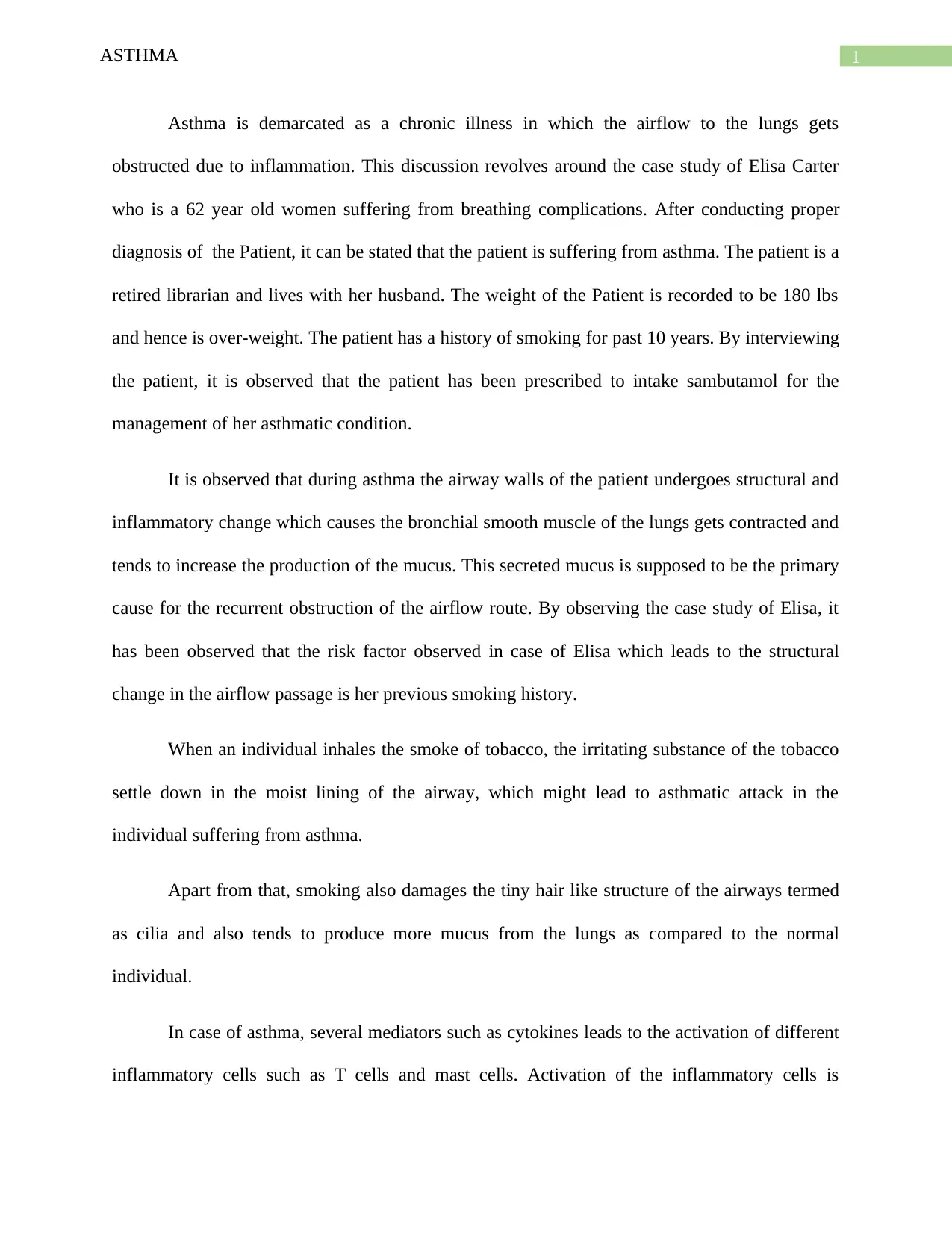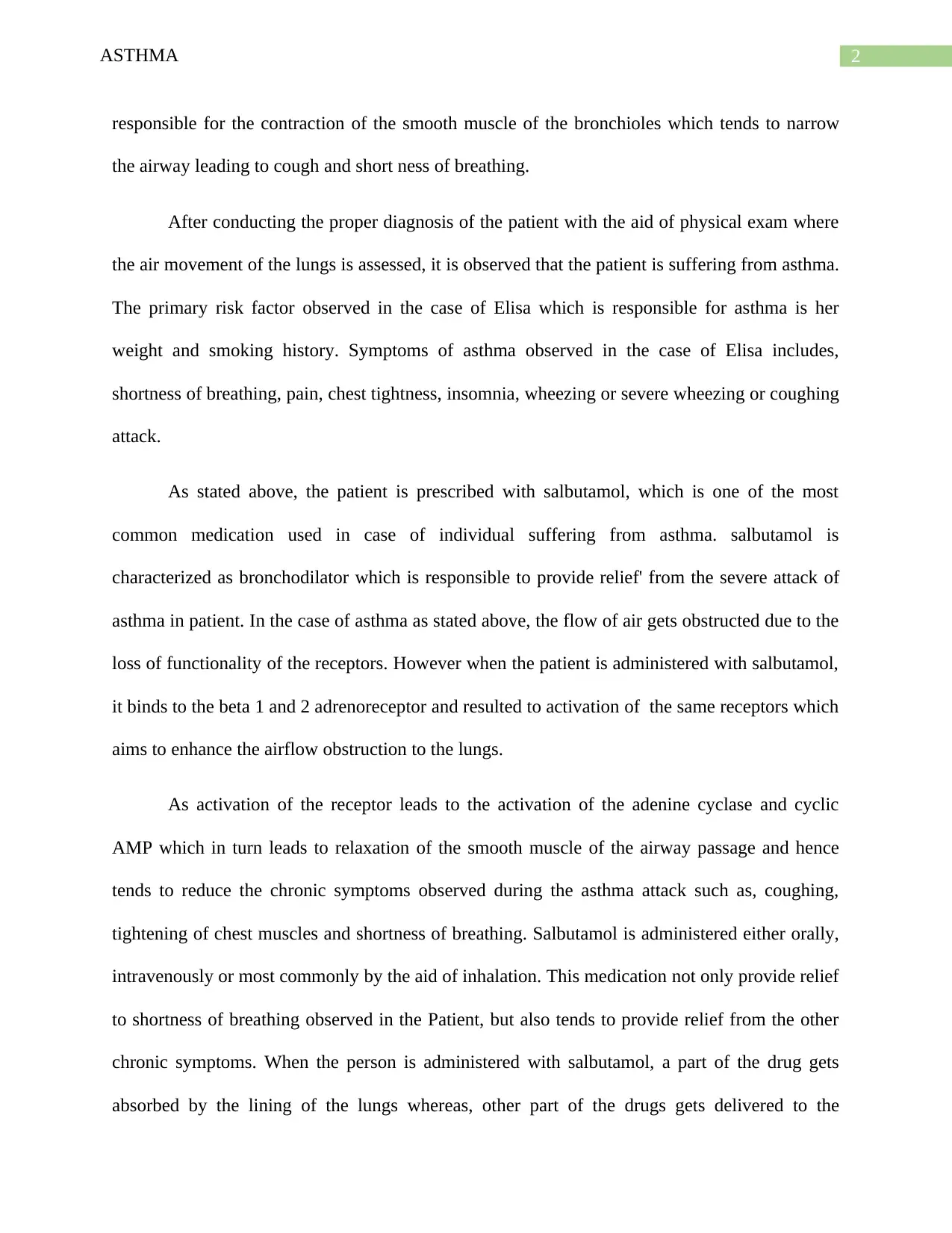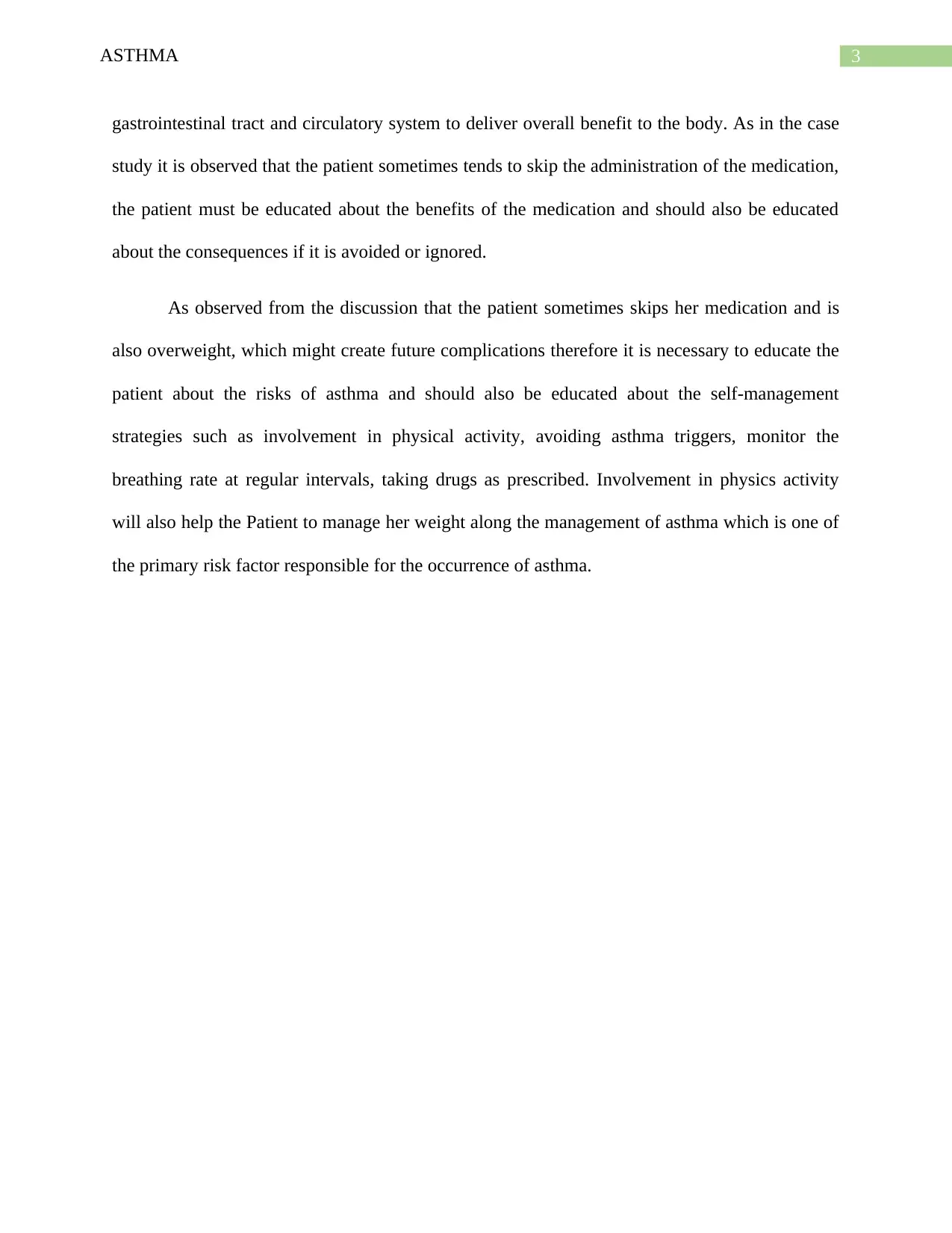Semester 2, 2019: BIOL122 Asthma Case Study Analysis
VerifiedAdded on 2022/09/28
|4
|865
|25
Case Study
AI Summary
This case study focuses on Elisa Carter, a 62-year-old woman diagnosed with asthma. The assignment delves into the patient's history, including smoking and weight, which are identified as risk factors. It explores the pathophysiology of asthma, detailing the structural and inflammatory changes in the airways that lead to obstruction and mucus production. The case highlights the symptoms of asthma, such as shortness of breath and chest tightness, and discusses the prescribed medication, salbutamol, a bronchodilator used to alleviate asthma attacks. The mechanism of action of salbutamol is explained, emphasizing its role in relaxing airway muscles. The importance of patient education regarding medication adherence and lifestyle modifications, including physical activity and avoiding asthma triggers, is emphasized to manage the condition effectively and prevent future complications. The case study provides an overview of asthma diagnosis, treatment, and patient management strategies.
1 out of 4











![[object Object]](/_next/static/media/star-bottom.7253800d.svg)